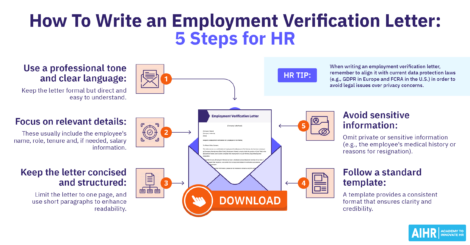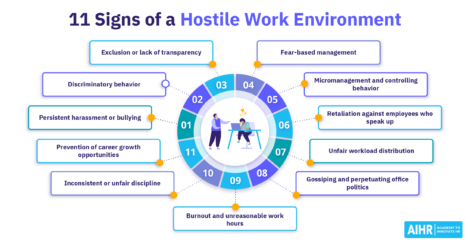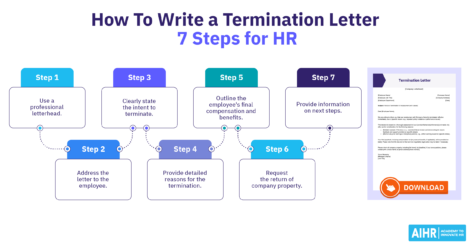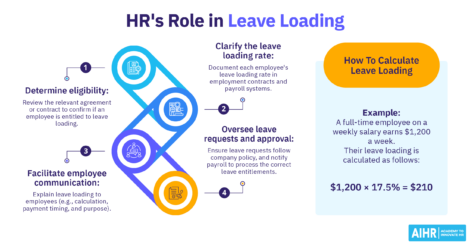Progressive Discipline: 5 Steps To Develop a Discipline Policy in 2025
61% of companies lack systems for reporting misbehavior, making them prone to legal risks. A progressive discipline policy provides a clear framework for handling workplace issues.

Progressive discipline is not just about making and enforcing rules — it’s about holding employees accountable for their actions. It’s a transparent and fair process allowing employees to voice their reasons for their actions. Unfortunately, many workplaces lack an environment where employees feel heard.
In fact, 78% of companies lack processes for staff to appeal or question management decisions, and 63% say their bosses rarely encourage open communication. Progressive discipline addresses these gaps by fostering transparency and trust and setting clear expectations. This article discusses its stages and how to develop a progressive discipline policy.
Contents
What is progressive discipline?
Why is progressive discipline important?
The main components of progressive discipline
4 stages of progressive discipline
How to develop an effective progressive discipline policy
What is progressive discipline?
Progressive discipline is a structured approach HR uses to address employee misconduct. It involves a step-by-step process that gives employees opportunities to improve their performance. Failure to do so usually leads to stricter disciplinary action and, eventually, dismissal.
The progressive discipline process helps ensure all employees who commit similar offenses are treated equally. Documenting the process is also essential to compliance with workplace policies and legal standards and maintaining fairness.
Why is progressive discipline important?
Here are the benefits of progressive discipline in the workplace:
- Positive workplace culture: Applying workplace policies equally to all employees minimizes favoritism and, therefore, resentment. Progressive discipline fosters accountability and consistency, motivating staff to work toward a common goal.
- Reduced turnover: Progressive discipline builds trust in the company’s commitment to fairness and objectivity by supporting employees’ improvement and growth. This can help reduce employee turnover.
- Clear communication of expectations and consequences: Progressive discipline reinforces company policies by setting improvement standards. Employees perform better when there’s no confusion about how they can thrive.
- Protection from wrongful termination claims: Proper documentation of incidents, warnings, and actions as part of progressive discipline demonstrates a consistent and fair termination process. This reduces the risk of legal disputes against the company.
- Enhanced employee self-improvement: Progressive discipline allows employees to correct their mistakes, empowering them by ensuring accountability for making meaningful changes. As a result, employees are more engaged and perform better.
The main components of progressive discipline
Progressive discipline consists of the following key components:
Clear company policies on expected behavior and performance standards
Employees must understand what the company expects from them regarding performance, behavior, and adherence to company rules and regulations. The progressive discipline policy should cover expectations, company values, and the disciplinary process and be included in the employee handbook.
Provide examples of acceptable and unacceptable behaviors, along with performance benchmarks. To avoid liability issues, ensure your policies follow legal and industry standards and communicate these policies during onboarding and training sessions. Encourage employees to give feedback or ask questions for clarity.
Consistent procedures for addressing infractions
A standardized progressive disciplinary plan minimizes perceptions of bias or favoritism. Develop a step-by-step protocol outlining how to address different types of infractions and define different levels of discipline (i.e., verbal warnings, written warnings, suspension, and termination).
Explain the criteria for escalation and assign HR personnel responsible for implementing and monitoring disciplinary actions. Review the application procedures to ensure consistency and fix any inconsistencies or loopholes you may spot.
Comprehensive documentation of incidents and actions taken
Documentation ensures accountability, fairness, and legal compliance in your progressive discipline system. Be sure to record the employee behavior in question, the entire disciplinary process, and the actions taken to handle the situation.
Also, secure your disciplinary process database to ensure confidentiality and compliance with data protection laws. You can access the necessary records or evidence in case of disputes, grievances, or legal proceedings. You can also use documentation to identify behavior patterns or systemic issues that may require intervention or adjustments to company policies.
Regular progressive discipline training for managers and HR staff
Managers and HR personnel should have the knowledge and skills to handle the disciplinary process effectively. It also builds their confidence in handling sensitive situations and reduces the risk of mismanagement, which could have legal consequences.
Train them on employee communication skills, conflict resolution, and legal compliance. Conduct workshops that provide scenario-based learning to simulate real-life disciplinary situations. Review employee records to understand the existing disciplinary process and update training regularly to reflect changes in company policies, labor laws, and best practices.
Learn to manage progressive discipline efficiently
Learn the skills you need to handle progressive discipline efficiently. To do so, you must document and communicate each step of the process clearly, and ensure fairness, consistency, compliance, and sensitivity.
AIHR’s Talent Management and Succession Planning Certificate Program will equip you with strategies to manage employee performance and development, and best practices in talent management, legal compliance, and effective communication.
4 stages of progressive discipline
Progressive discipline typically involves the following four stages:
Stage 1: Verbal warning
This stage involves addressing minor infractions or first-time offenses informally, though HR normally documents it. Examples of employee behaviors that merit a verbal warning include:
- Arriving late to work or meetings occasionally without informing the manager
- Submitting incomplete or substandard work
- Using an inappropriate tone or language during a team discussion (non-threatening or non-offensive).
A verbal warning requires clearly explaining the behavioral or performance issue and the steps involved in progressive discipline. Speak to the employee privately and give them access to resources to help them correct the problem. Document the date, time, and conversation for future reference.
Stage 2: Written warning
At this stage, the company issues the employee a formal notice regarding recurring issues or more serious concerns. This notice also outlines the consequences if the situation continues or worsens. Examples of employee behaviors that merit a written warning are:
- Consistently arriving late to work or meetings despite receiving a prior verbal warning
- Repeatedly failing to meet deadlines or produce work of acceptable quality
- Ignoring workplace policies, such as using unauthorized devices in restricted areas or disregarding safety protocols.
When preparing a written warning, remind the employee of the company’s progressive discipline policy. Provide a comprehensive description of the issue (including dates, times, and specific actions or behaviors) and state the specific company policies or standards the employee has violated.
Explain the improvement needed, set goals for achieving it, and inform the employee of potential disciplinary action if they repeat the offense. Have the employee sign the warning to confirm receiving it.
Be sure to use professional and neutral language to avoid escalation. Allow the employee to explain themself and include their comments in your documentation. Finally, provide them with a copy of the warning and keep one in the company database. You can also use a disciplinary action form or send the employee a disciplinary action letter.
Stage 3: Final warning or suspension
For ongoing problems, issuing a final written warning or considering temporary suspension may be necessary. Examples of employee behaviors that merit final warning or suspension include:
- Chronic tardiness or absenteeism that negatively affects operations and continues despite prior warnings
- Continuous failure to follow company policies despite previous warnings, such as attendance policies, safety procedures, or IT security protocols
- Negligence in job responsibilities that leads to costly errors, missed opportunities, or safety risks.
Recap the previous warning and explain that this is the last step before possible termination. Outline the progressive discipline plan and provide a timeline for corrective action, stating explicitly that failure to improve will result in termination. If necessary, suspend the employee with or without pay for a specified period and use this time to investigate the issue further.
Meet with the employee privately to discuss the issue and document the final warning or suspension (including reasons and possible outcomes). If appropriate, provide the employee with relevant resources or support.
Stage 4: Termination
This is a last resort for the most severe policy or legal violations or after all other steps have failed. Examples of employee behaviors that merit termination are:
- Being under the influence of drugs or alcohol at work, particularly in roles where safety is a priority
- Engaging in behavior such as sexual harassment, using racial slurs, or other discriminatory acts that violate workplace policies and laws
- Persistent insubordination, especially when it affects operations.
When terminating an employee, make sure you’ve documented all previous warnings and actions and that they’re consistent with the progressive discipline process. Follow employment laws and company procedures to reduce legal risks and inform the employee of the decision in a professional manner.
Explain the termination process to the employee, including final pay, benefits, and exit procedures. Conduct the termination meeting privately and respectfully, with an HR representative present. If appropriate, offer support, such as outplacement services or a reference letter.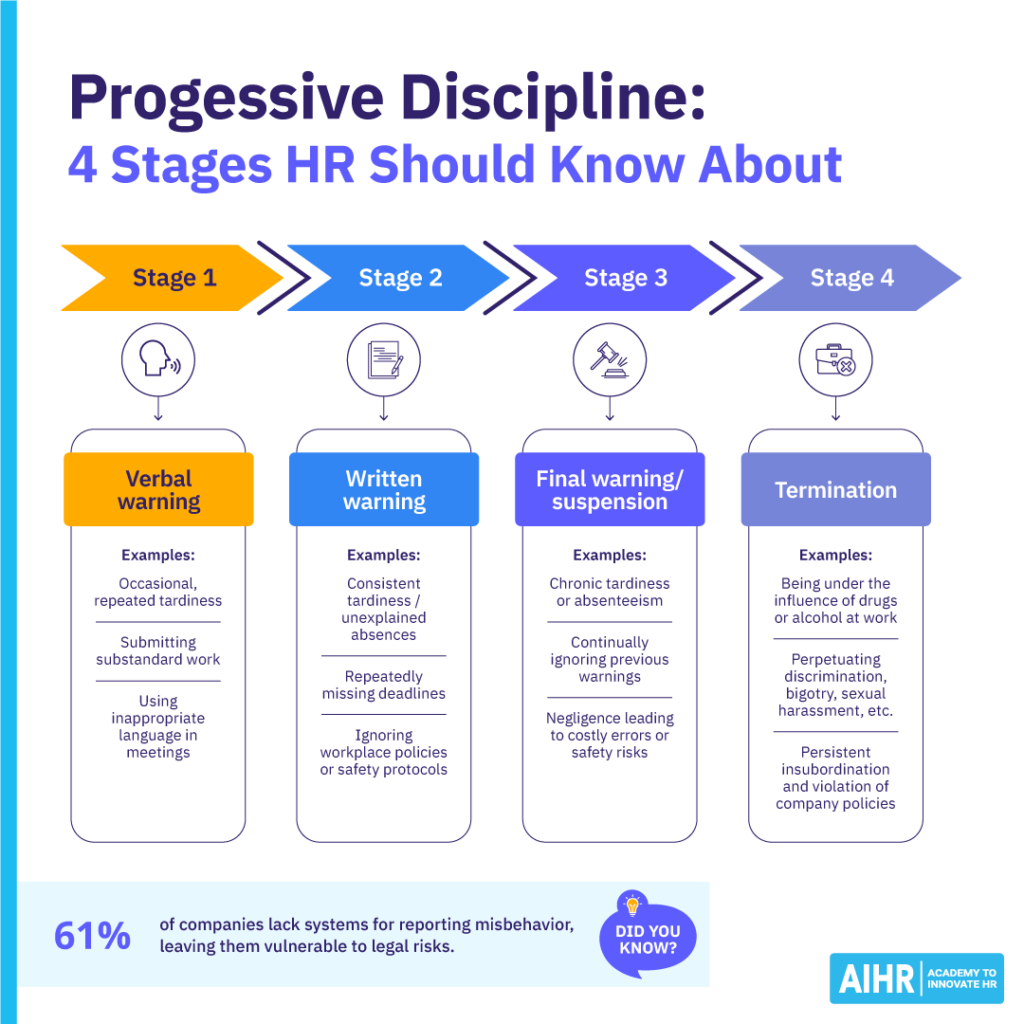
Developing an effective progressive discipline policy: 6 steps
Follow these steps to create a progressive discipline policy that works for your organization and treats all employees fairly.
1. Define key objectives
Explain the purpose of progressive discipline in your organization. When setting goals, define how the progressive discipline plan promotes equality, encourages employee improvement, and aligns with company values. Emphasize that progressive discipline is about correcting issues, not punishing misbehavior. Highlight how the policy prevents risks like wrongful termination.
For example, you can state: “This policy aims to address performance and behavioral concerns constructively, ensuring fairness while supporting employees in self-improvement and meeting organizational standards.”
2. Outline the process
Detail the company’s progressive discipline system with examples of infractions and matching actions: verbal warnings, written warnings, final warnings or suspension, and termination. Categorize common performance or behavior issues like tardiness, misconduct, or workplace policy violations and match each with corresponding actions.
Next, explain how and when the company will escalate disciplinary action. Remember to be specific. For instance, you can state: “Three instances of tardiness in a month may result in a written warning.”
3. Ensure legal compliance
Study federal, state, and local laws regarding employee rights, wrongful termination, and workplace discrimination, and make sure your progressive discipline policy aligns with them. It should cover due process, equal treatment, and proper documentation. Have your legal team review your policy to identify any compliance issues.
Remember to update policy regularly to reflect changes in legislation in a timely manner. The policy should also include anti-retaliation clauses to protect employees who raise concerns about the disciplinary process.
4. Train managers
Provide progressive discipline training to ensure proper policy implementation. This includes teaching HR and managers what steps to take in progressive discipline, documentation requirements, and conflict resolution techniques. This will prepare them for real-life situations, such as delivering warnings or addressing employee pushback.
Additionally, provide implicit bias training to address and minimize unconscious bias and periodically provide refresher training to address knowledge gaps or policy updates.
5. Communicate the policy
Include the policy in the employee handbook and communicate this to the entire workforce. Encourage questions and feedback so you can make changes to the policy if necessary. Involving employees in this process can also increase engagement and familiarize them with the policy.
Don’t forget to inform new employees accordingly. During each new hire orientation and onboarding period, explain the steps and expectations of the policy and answer any questions they may have.
To sum up
Progressive discipline addresses workplace issues fairly and clearly, allowing employees to correct their performance or behavior. Instead of punishing employees unjustly, it builds trust and helps employees grow while protecting the company from legal risks.
When done correctly, progressive discipline supports the employee’s improvement. This can also result in enhanced engagement, retention, and performance, benefiting both the workforce and the organization.
Learn more
Related articles
Are you ready for the future of HR?
Learn modern and relevant HR skills, online







